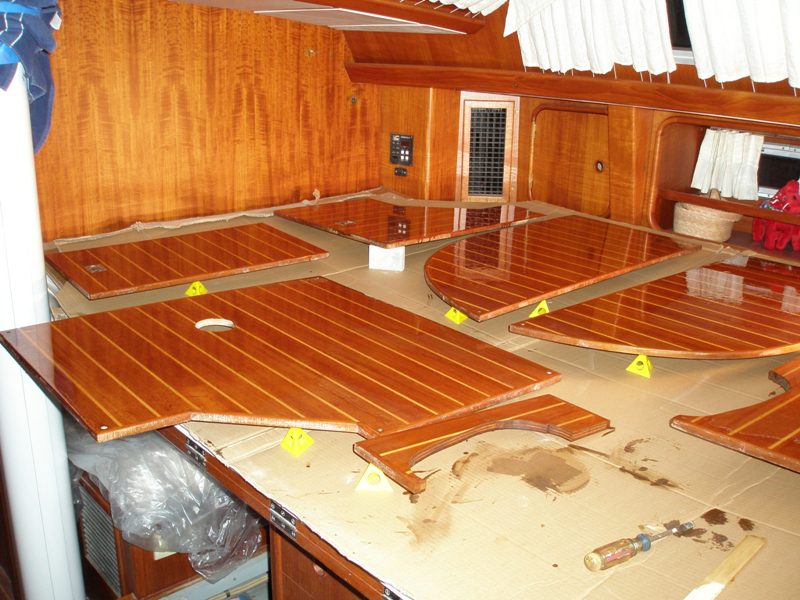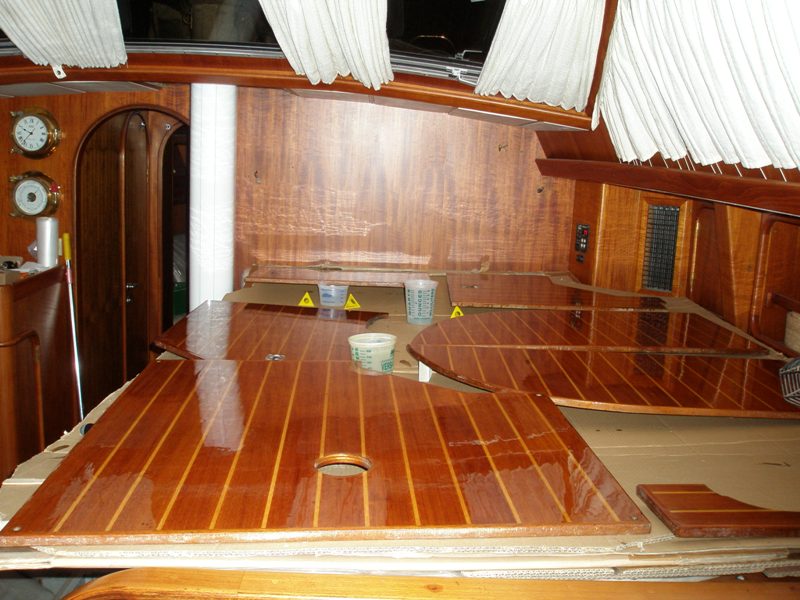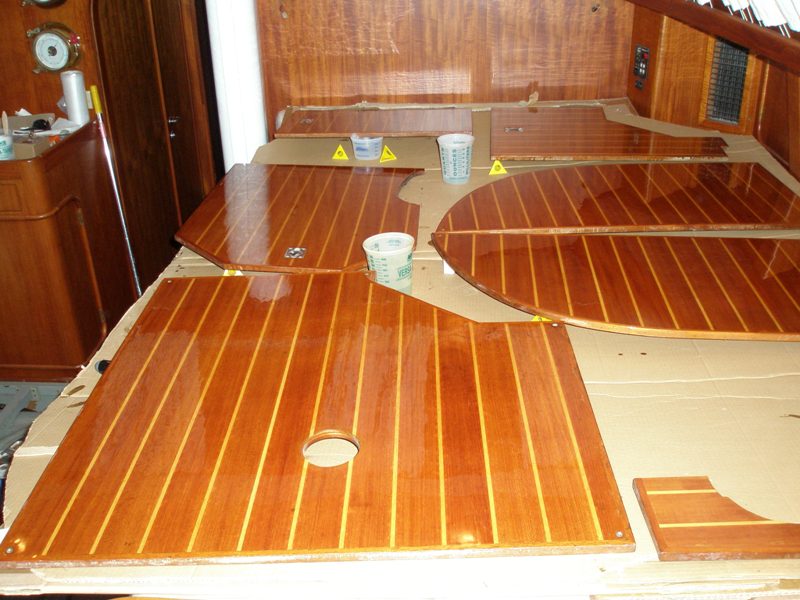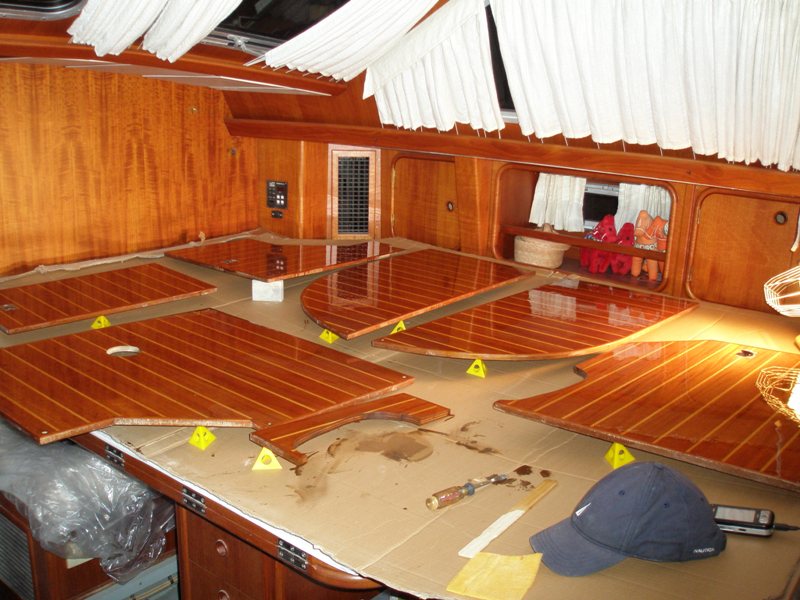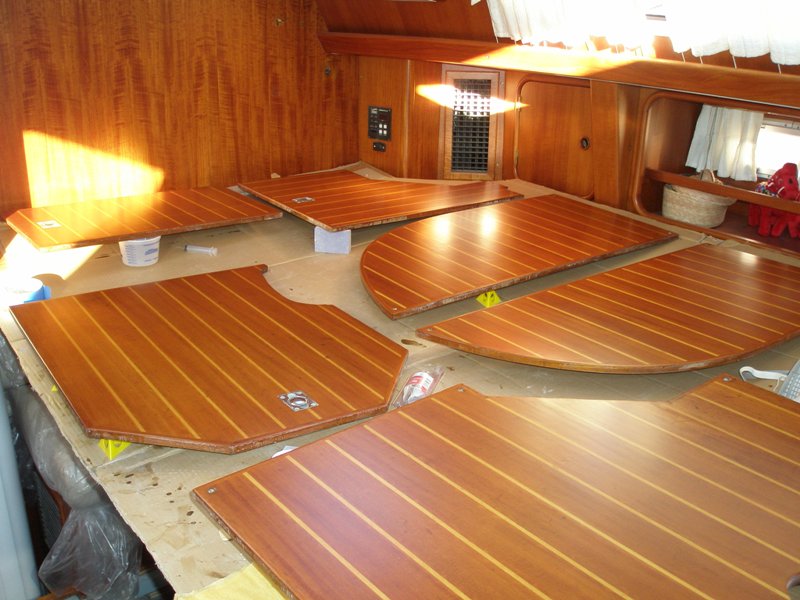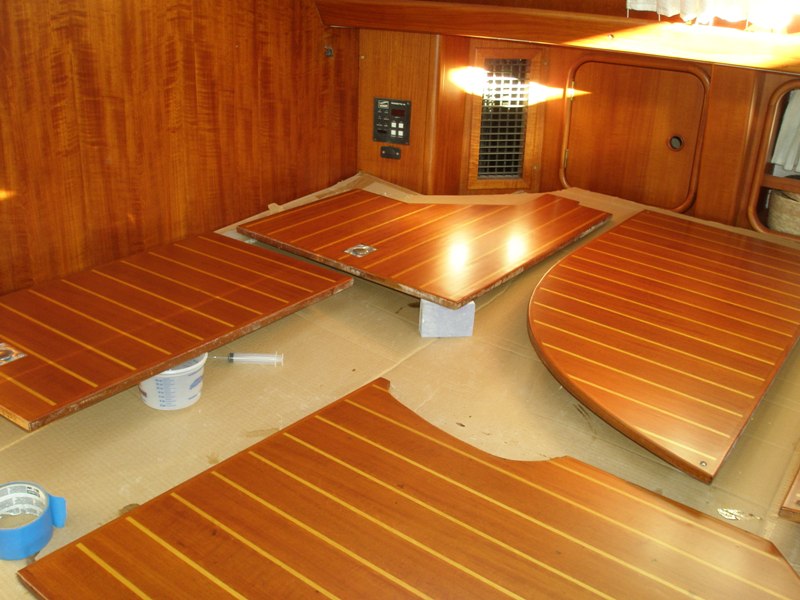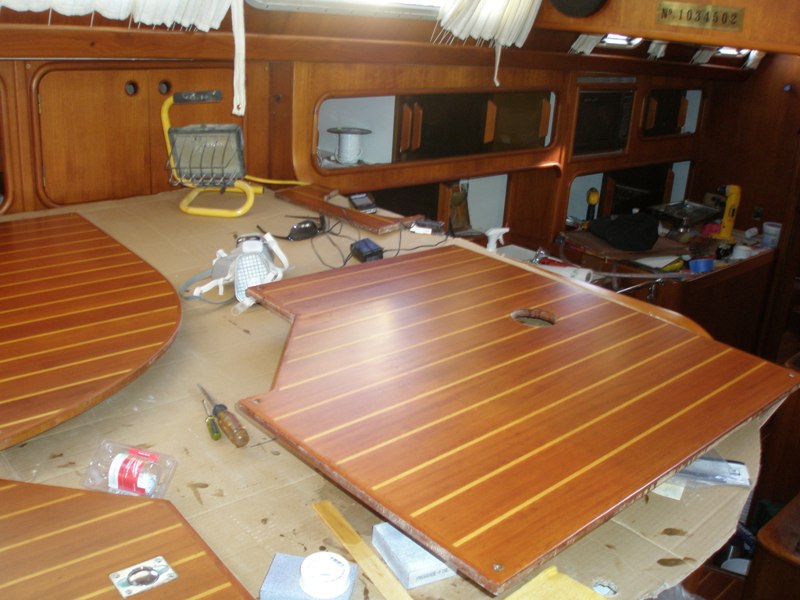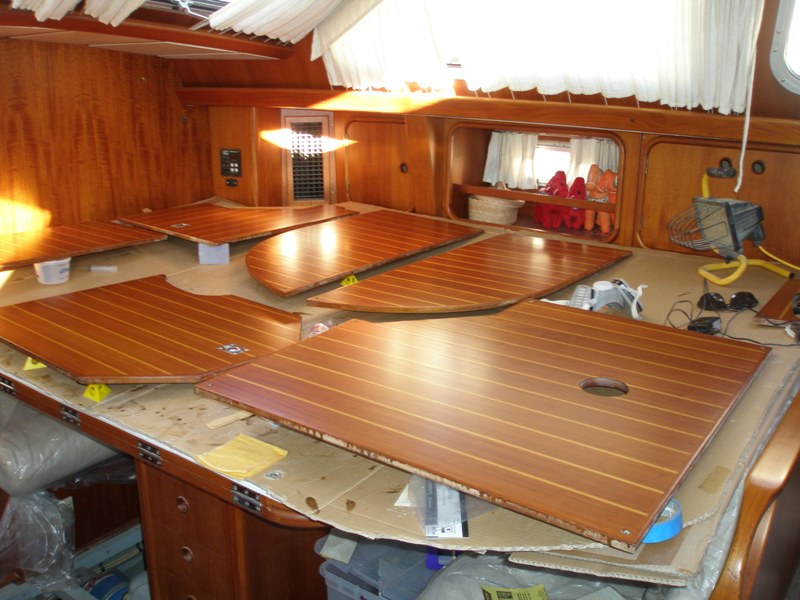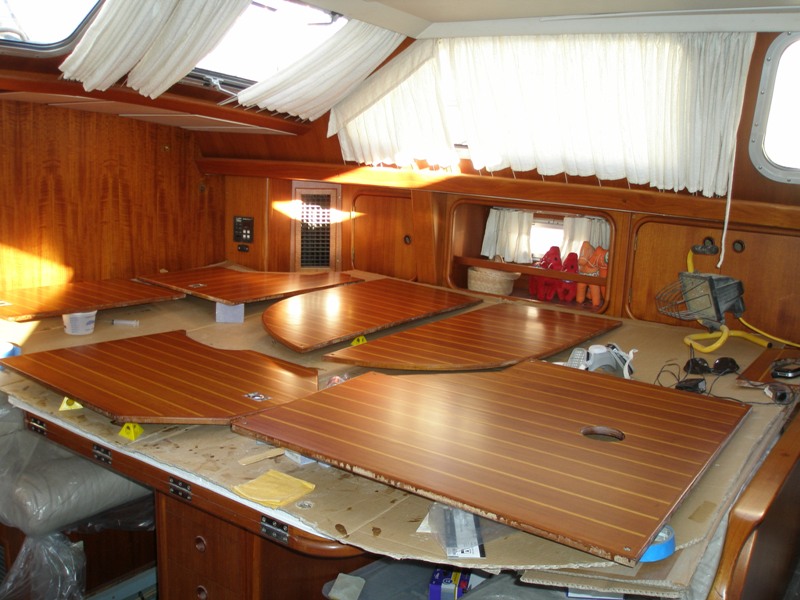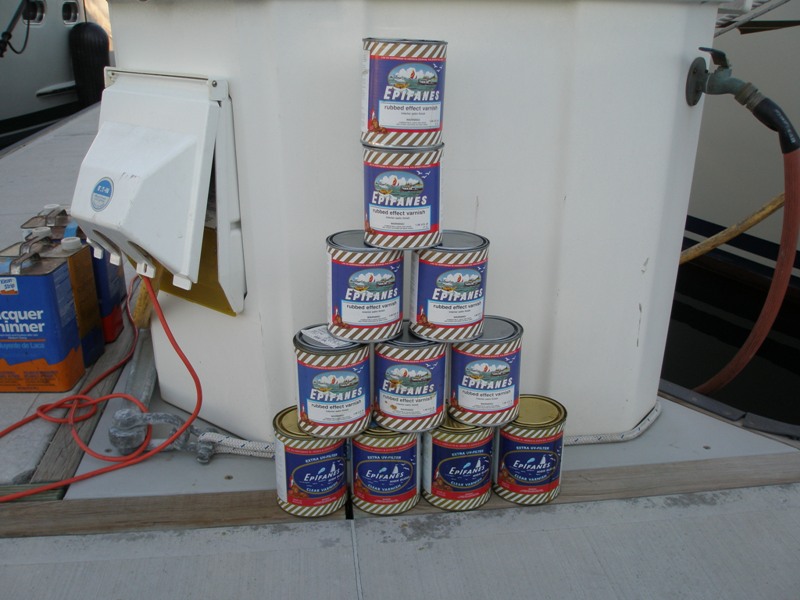Saloon Sole Varnish
Back to varnish work with the Saloon Sole needing the most attention as
the sailing season is coming and there will be people coming aboard
with wet feet and there are way too many very thin places and new small
dings/scratches from all of the heavy work which has been happening
this winter. So, the varnish work happened in two chunks, each chunk
took about 2 weeks to complete. Each piece got 3 coats of gloss varnish
and then 5 coats of rubbed effect varnish. The result from Epifanes is
as usual "Striking"!
During the first weekend I sanded and cleaned up the first 4 pieces,
these were the ones which had the most damage and took quite a bit of
time trying to bleach out black spots and the like. I had alot of
trouble with the pieces near the companionway having residual surface
contamination (or perhaps an incompatable touchup like lackar or
something) which caused the varnish to not cure. I had to scrape it all
off and then sand a bit more to get a clean surface. Once the first
couple of coats of gloss go on and there is a good base the additional
coats can be built up relatively quickly. In the space of a couple of
hours I can sand out a set and apply a coat of varnish. The amount of
sanding required once I am getting good coats does not take very long
at all.
Between coats of gloss varnish I use 220 sandpaper, between coats of
rubbed effect varnish I use 320 sandpaper.
The way I can get a coat a day during the winter is to run the heater
(reverse cycle heat pump) and hold the boat at 78 degrees. As long as I
keep the dust under control I don't have too much trouble with dust
contamination. The last coat is not heated to avoid dust for the first
few hours and then heated also.
After the pieces were finished I did not walk on them for at least two
weeks and it will be a couple of months before I am not too concerned
about leaving objects sitting on the fresh varnish.
Note that it is important to clean up the edges of the pieces before
putting them back down, if the fit is too tight the runs over the edge
can lift the rest of the varnish near the edges. The best way I have
found is to clean up the edges with a fresh single edge razor blade
while the varnish is a couple of days old and it will cut fairly easily
without damaging the top surface.
The total time to complete the saloon sole was about 4 weeks with two
full weekends to prep and first coats. So the total time:
4 days * 8 hours / day = 32 hours
14 days * 2 hours / day = 28 hours (a couple of coats did not go well)
So the total time is 60 hours and I used up about 11 quarts of varnish,
a container of thinner, a box of 220 sandpaper (20 sheets), a box of
320 sandpaper (20 sheets), 20 chip brushes, masking tape, and a months
heating bill of something like $100 more than normal. So I would expect
a yard to charge perhaps $5000 in labor and $600 in materials. The
electric bill would probably be in their overhead. So call is $5500 -
$6000 to apply the full set of coats to the cabin sole.
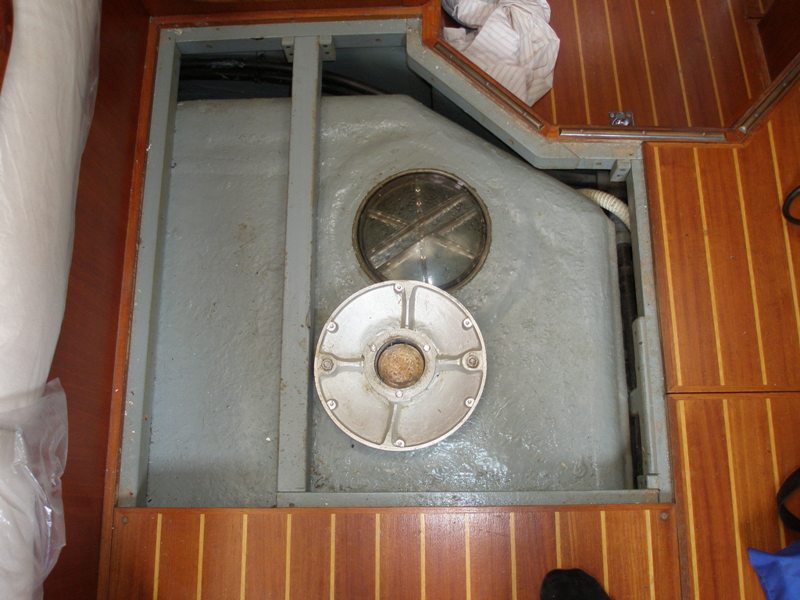
Taking the small table loose. I think for living aboard it is more in
the way. I will store it for use when offshore sailing.
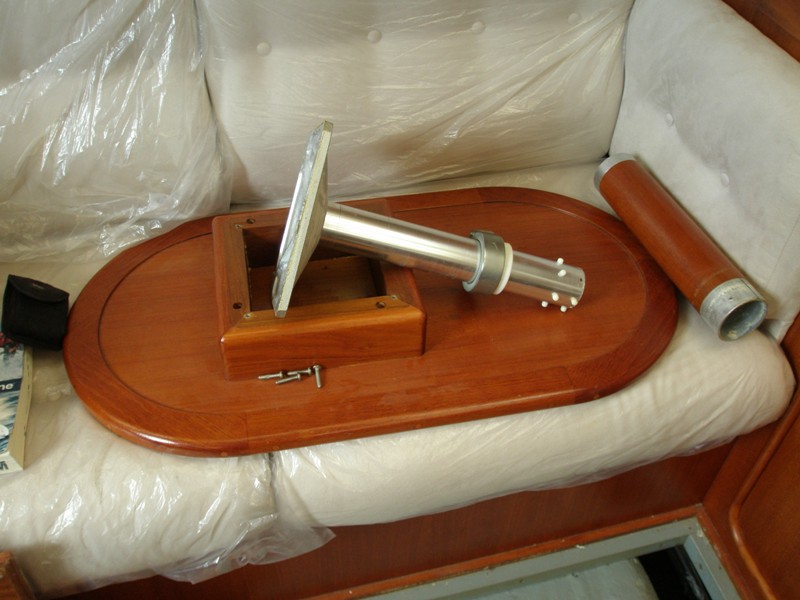
Here is the table, the base, and the screws to hold it all together.

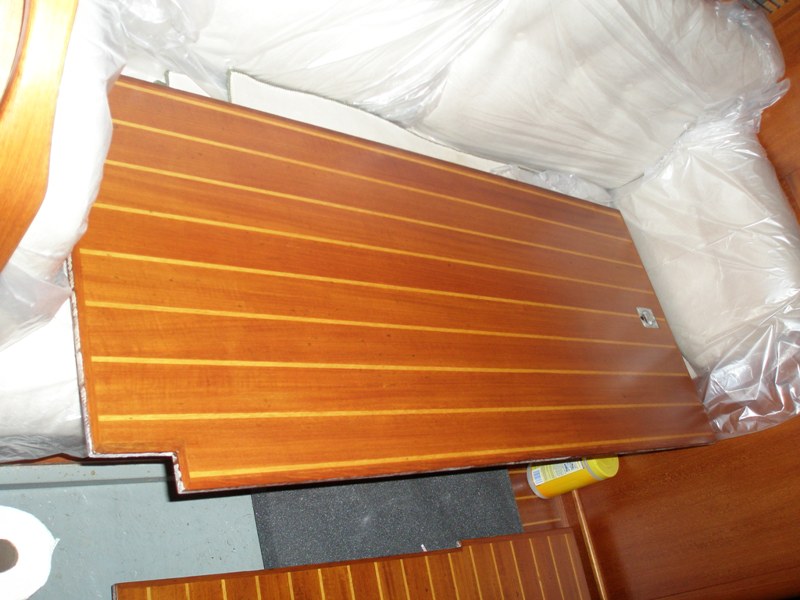
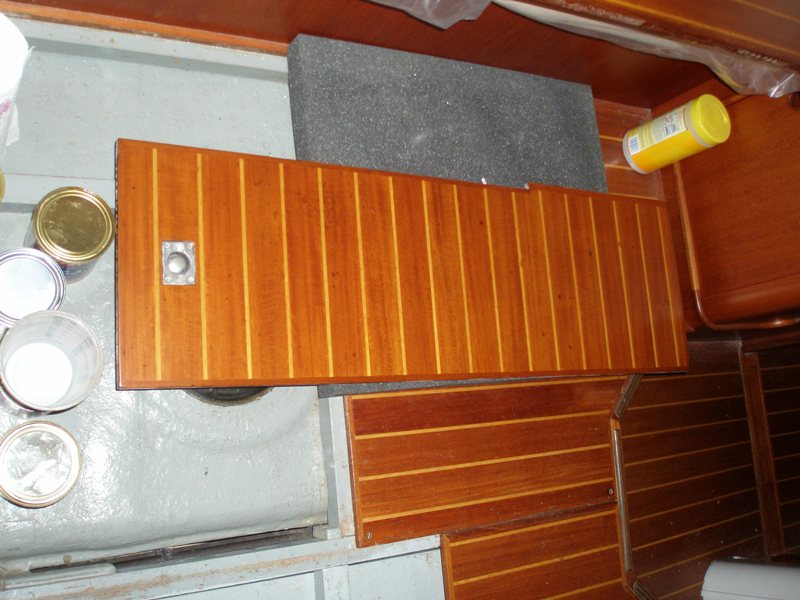
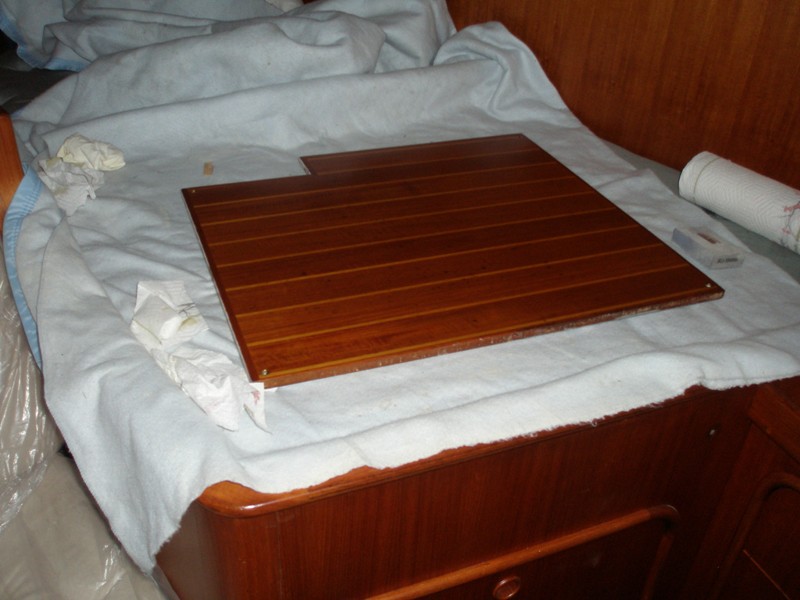
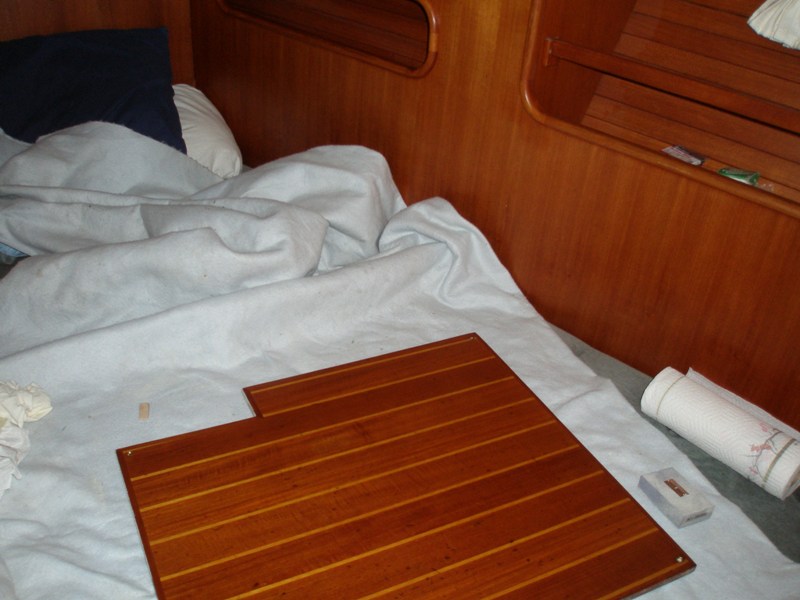
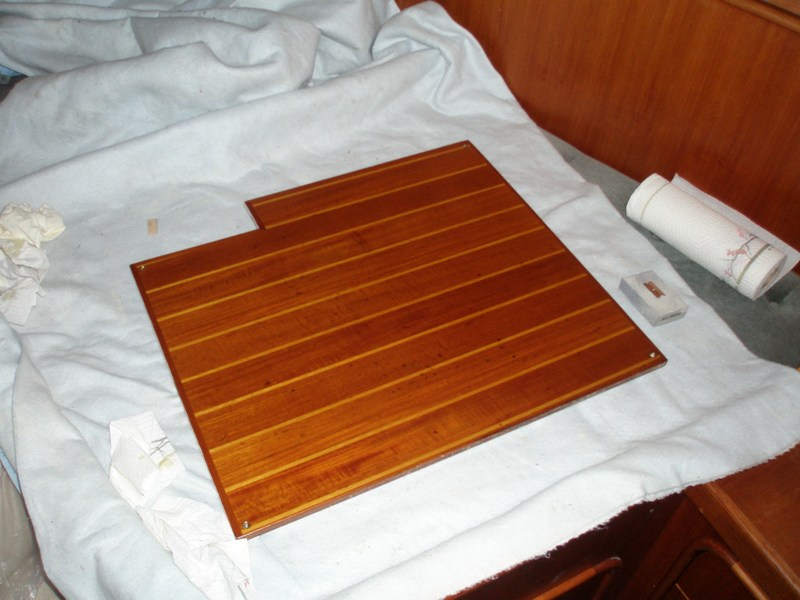
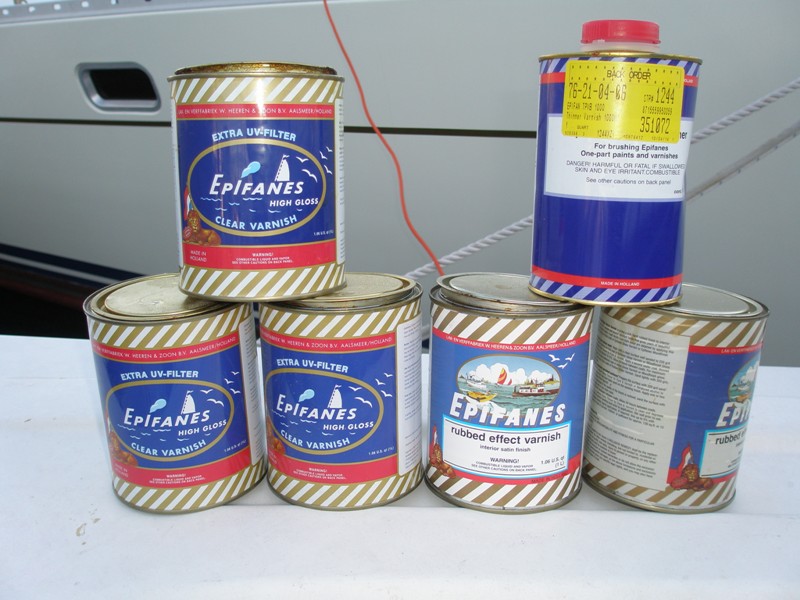
Many more cans of varnish. These got most of the first pieces of floors
completed. There were still a couple of partial cans of rubbed effect
varnish because the last two coats I always open a fresh can.
These are the second half of the saloon sole:
After Completing the first 4 pieces it was time to take into the rest
of the saloon floor. I stored the previous pieces in a friends basement
to let the cure and avoid accidents and now I get started on the second
batch!
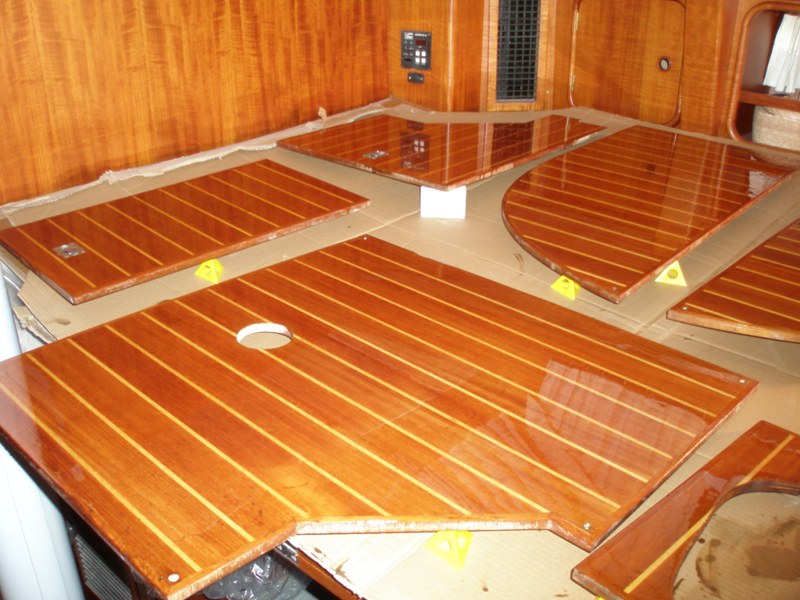
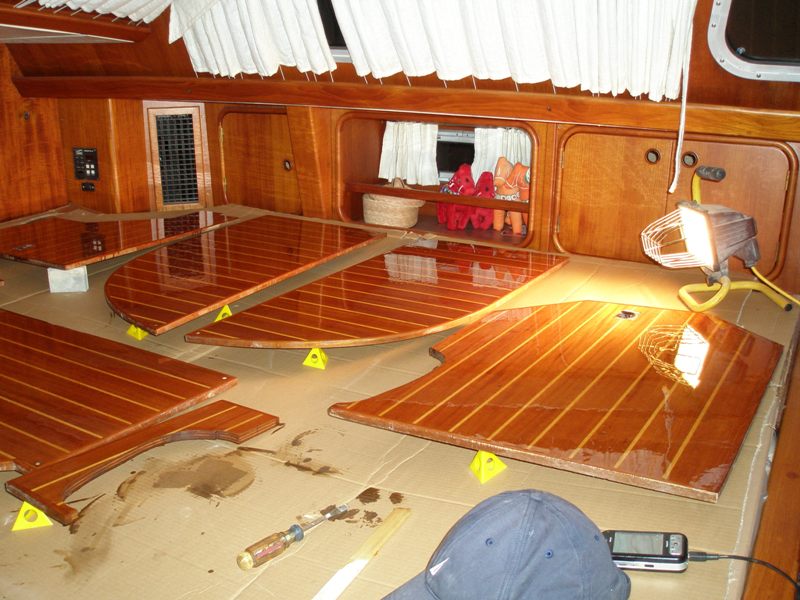 '
'
